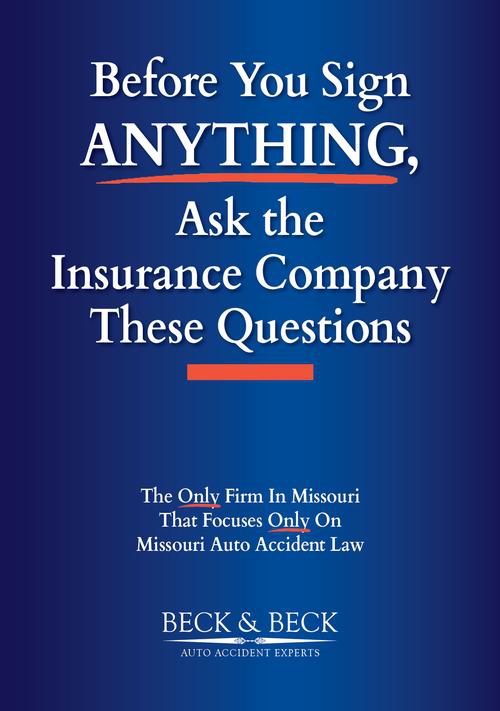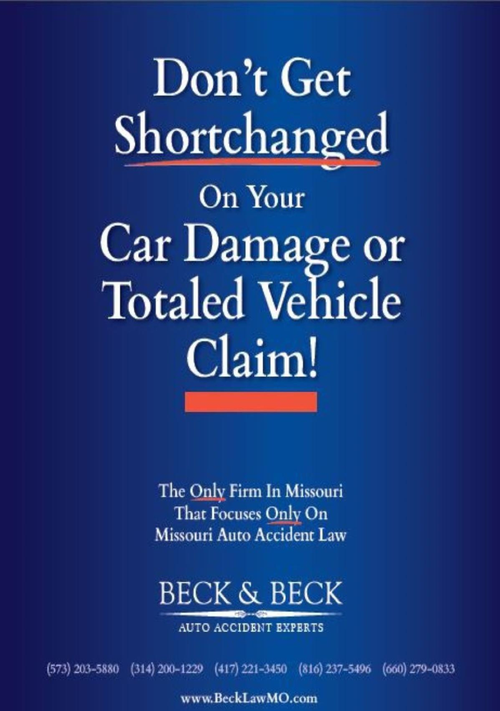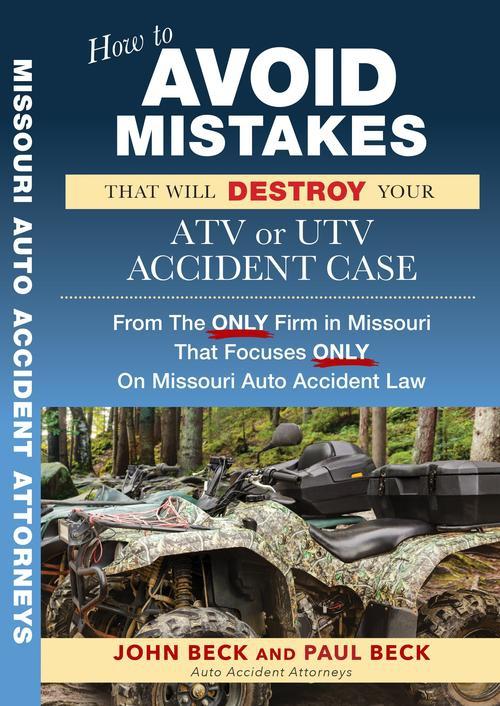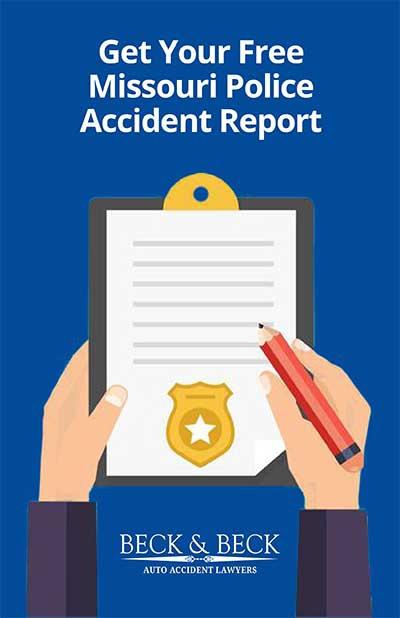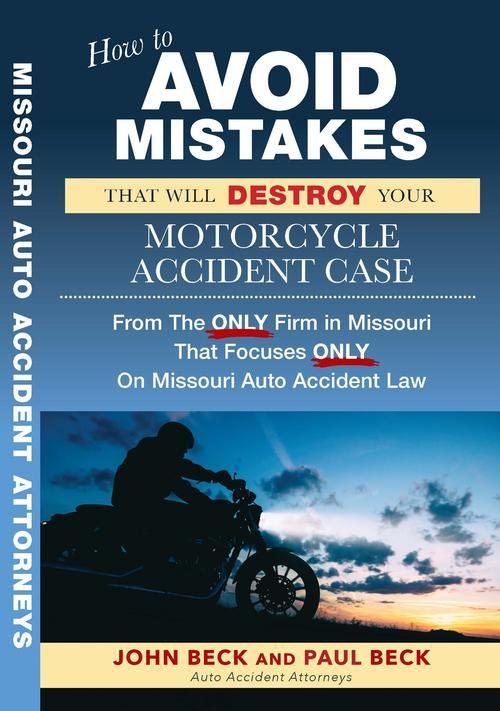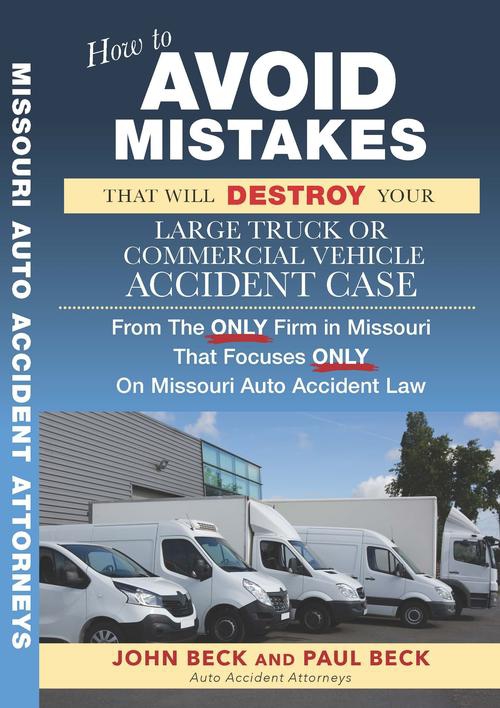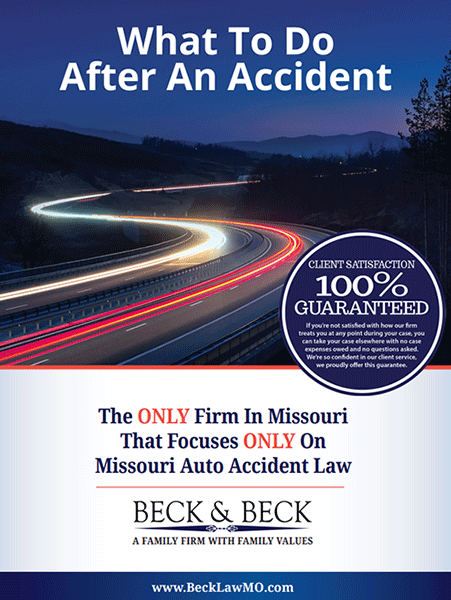In Missouri, trucking companies are regulated under both federal and state law. The FMCSA sets the nationwide standards—covering things like how long a driver can stay behind the wheel, when they must rest, and what inspections their trucks must pass.
Missouri then adds its own rules through MoDOT. Those include permits for oversized loads, state weight limits, and restrictions on certain routes.
The reason for this overlap is simple: trucks travel everywhere. Federal law keeps the rules consistent across state lines, while Missouri’s rules focus on the conditions here at home. Drivers on Missouri roads may need to meet both sets of standards at once.
When those standards are ignored, the risks increase. A driver who has been on the road too long, a truck that skipped an inspection, or a load that’s too heavy for the permit—it all matters. These violations can be strong evidence of negligence.
That’s why one of our first steps in a trucking accident injury case is to dig into the records. Our experienced St. Louis truck accident attorneys review the driver’s logs, the company’s inspection reports, and any permits that should have been received.
If evidence demonstrates that the rules were not followed, it can help prove fault and hold the responsible parties accountable.
Missouri State Rules vs Federal Rules
Missouri follows federal rules as the foundation but adds its own specific requirements on top. For example, Missouri’s truck height regulations on certain highways differ from those in other states.
Missouri also requires intrastate trucks to display “MO” markings, which aren’t needed for trucks that only travel between states.
You’ll also find that Missouri has unique commercial zones in cities like St. Louis and Kansas City. These areas allow trucks to be 15 feet tall instead of the usual 14 feet. Missouri’s weight limits and permit requirements can also differ slightly from what you’d see in neighboring states.
Agencies Which Enforce Compliance in Missouri
Several agencies share responsibility for enforcing trucking laws in Missouri, but their roles are not the same.
The Missouri State Highway Patrol takes the lead on specialized enforcement. Troopers assigned to the commercial vehicle division are trained to inspect trucks, review driver logs, and make sure Hours-of-Service rules are followed. Their inspections can uncover violations that directly affect liability in an accident case.
MoDOT’s Motor Carrier Services division focuses more on permits and regulatory compliance. They handle applications for oversized and overweight loads, conduct safety audits, and monitor whether carriers are operating within Missouri’s size and weight restrictions.
Local police departments are less involved in trucking-specific enforcement but still play a role. A city or county officer may not inspect a logbook, but they can issue citations for speeding, running lights, or other moving violations.
Those tickets matter too, because they can impact a driver’s CDL and may serve as supporting evidence in a crash investigation.
CDL and Driver Rules in Missouri
A Commercial Driver’s License (CDL) is a special license required to operate large commercial vehicles. This isn’t just a regular driver’s license with extra permissions. The CDL process involves additional testing, training, and ongoing requirements that regular drivers don’t face.
Missouri follows federal CDL standards, which means the rules are the same whether you’re driving in Missouri or across the country. However, you still need to get your CDL from Missouri if you live here.
Age, Medical, and ELDT Rules
Before you can even take the CDL test, you must complete Entry-Level Driver Training (ELDT). ELDT is federally mandated training that includes both classroom instruction and behind-the-wheel driving. You can’t skip this step or test out of it.
Age requirements depend on what type of driving you plan to do. You must be at least 18 years old to get a CDL for driving only within Missouri. For interstate driving or transporting hazardous materials, you must be 21.
All commercial drivers must pass a Department of Transportation (DOT) physical exam. This medical exam checks your vision, hearing, blood pressure, and overall health. You must carry your medical certificate with you whenever you’re driving commercially.
Alcohol, Drug, and Phone Rules for CMV Drivers
Commercial drivers face much stricter rules than regular drivers when it comes to substance use and distractions. The blood alcohol concentration (BAC) limit for CDL holders is 0.04%, which is exactly half the limit for other drivers. These lower limits help prevent drunk driving crashes involving large commercial vehicles.
Random drug and alcohol testing is also required. Your employer must test you randomly throughout the year, and you can be tested after any accident or if your supervisor suspects impairment.
Federal law completely bans handheld phone use for commercial drivers. This means you cannot hold a phone to talk, text, or use any apps while driving. Hands-free devices are allowed, but the phone cannot be in your hand. Violations can result in fines up to $2,750, put your CDL at risk, and contribute to distracted driving accidents.
Short Haul and HOS Exemptions
- Short-Haul Drivers—Operators who stay within a reasonable distance of their work location and return at the end of each shift may be eligible for this exemption. It allows them to avoid elaborate electronic logging while yet maintaining accurate time records to demonstrate compliance.
- Agricultural Drivers – During planting and harvest seasons, drivers moving farm products often receive exemptions from certain hours-of-service rules. These allowances recognize the seasonal nature of agricultural work. Even so, drivers are still required to track their hours and follow core safety regulations.
Hours of Service Rules in Missouri
Hours of Service (HOS) rules are federal regulations designed to prevent driver fatigue. These rules limit how long you can drive and work before taking required rest breaks.
Driver fatigue causes thousands of truck accidents each year, frequently resulting in catastrophic injuries, making these rules critical for everyone’s safety.
HOS rules apply to nearly all commercial drivers in Missouri. Whether you’re driving locally or across the country, you need to follow these time limits and keep accurate records.
Daily and Weekly Limits
The core HOS limits focus on preventing fatigue through mandatory rest periods. You can drive for a maximum of 11 hours after having 10 consecutive hours off duty. This driving time must fit within a 14-hour on-duty window that includes all work activities, not just driving.
You also face weekly limits that prevent excessive work over longer periods. You cannot be on duty for more than 60 hours in any 7-day period or 70 hours in any 8-day period. Once you hit these limits, you must take time off before continuing to work.
These limits work together to ensure you get adequate rest both daily and weekly. The system recognizes that fatigue builds up over time and that short-term rest isn’t always enough.
Break and Sleeper Rules
Federal rules require drivers to take a 30-minute break after eight consecutive hours behind the wheel. That break can be used for any non-driving activity, such as eating, resting, or completing paperwork.
Long-haul drivers may also use the sleeper berth provisions, which allow the required ten hours of off-duty rest to be split into two separate periods rather than taken all at once. Because those provisions are technical, they must be followed exactly to remain compliant.
Every hour of driving and rest must be recorded in a logbook or electronic logging device, and falsifying records—or failing to keep them properly—can lead to significant penalties.
Exemptions Which Change HOS in Missouri
Certain situations allow drivers to operate outside the standard Hours-of-Service rules. In Missouri, exemptions apply to utility service vehicles and to drivers hauling agricultural products within 150 miles of the source.
Federal law also provides an adverse driving conditions exception, which permits up to two additional hours of driving when unexpected weather or road closures make it unsafe to stop as planned.
In declared emergencies, drivers may receive temporary relief from HOS limits, but those exemptions are narrow and must be documented carefully to remain valid.
Vehicle Inspection and Maintenance Rules
Commercial trucks must be regularly inspected, maintained, and repaired to stay in safe operating condition. The law places this responsibility on both the carrier and the driver. Mechanical failures—especially in large trucks—are a common cause of severe accidents, which is why proper maintenance is not optional but a legal duty.
You cannot operate a vehicle if you know, or reasonably should know, that it has a safety defect. Drivers are expected to inspect their trucks before trips and to refuse to operate equipment that is unsafe.
What Inspections Are Required
Different types of inspections serve different purposes in keeping trucks safe:
| Inspection Type | Frequency | Who Performs | Purpose |
| Pre-trip | Before every shift | Driver | Check for obvious defects |
| Post-trip | After shifts with defects | Driver | Document problems found |
| Annual | Every 12 months | Qualified inspector | Comprehensive safety check |
| Roadside | Random | Law enforcement | Compliance verification |
Pre-trip inspections are your daily responsibility as a driver. You must check critical systems like brakes, lights, tires, and steering before driving. Any defects must be reported and fixed before the vehicle can be used.
Which Records Must Be Kept and For How Long
Federal law requires trucking companies to keep thorough records of inspections and maintenance. Driver logs and related papers must be preserved for at least six months, and inspection and maintenance records for a year.
Annual inspection records must be kept for 14 months to allow for follow-up examinations or accident investigations. Most carriers now use Electronic Logging Devices (ELDs) to automatically record driving hours, but paper files are still required for maintenance and inspection records, and both types of paperwork are thoroughly checked when compliance is in question.
Which Markings and Equipment Are Required
All commercial trucks must display proper identification and carry specific safety equipment. Each vehicle must clearly show the carrier’s legal name and USDOT number in a visible location. Trucks operating exclusively within Missouri must also include “MO” markings.
In addition, every truck must be equipped with essential safety gear, including:
- Fire extinguisher—securely mounted and kept in working condition.
- Spare fuses—available for electrical systems unless circuit breakers are used.
- Warning triangles—reflective triangles to place on the road in case of a breakdown or emergency.
- First aid kit—stocked with basic supplies for medical emergencies.
Missouri law requires additional marks on excessive loads, such as “OVERSIZE LOAD” signs and caution flags. These indicators notify other drivers that the truck exceeds conventional dimensions, allowing them more time to react safely.
Size, Weight, and Permit Rules in Missouri
Missouri sets specific limits on truck size and weight to protect roads and bridges from damage. When your load exceeds these limits, you must obtain special permits before traveling. Operating oversize or overweight without proper permits can result in significant fines and legal problems.
These limits aren’t just suggestions. They’re based on engineering studies of what Missouri’s infrastructure can safely handle.
Missouri Size and Weight Limits
On Missouri highways, trucks are limited to 8 feet, 6 inches in width. The height limit is 13 feet, 6 inches on most routes, but certain designated highways allow 14 feet. A single trailer may be up to 53 feet long, while longer combinations are permitted on interstate roads. The maximum gross vehicle weight is 80,000 pounds, with no more than 20,000 pounds allowed on a single axle.
If a truck is larger or heavier than these limits, a special permit is required before it can operate in the state. These restrictions are in place to protect bridges and roadways and to make sure other drivers are not put at unnecessary risk.
When You Need Oversize or Overweight Permits
You need a permit whenever your truck and load exceed legal dimensions or weight limits. Routine permits in Missouri are available for oversize and overweight loads that exceed standard legal limits, but the maximum dimensions and weight allowed may vary based on current state regulations.
These permits are typically processed quickly and cost less than complex permits.
Anything larger than routine limits is considered a “superload” and requires detailed engineering review. Superload permits can take weeks to process and may require route studies or infrastructure modifications.
Overweight permits have different categories based on how much you exceed legal weight limits. The more you exceed limits, the more restrictions and requirements you’ll face.
When Travel is Restricted in Missouri
Even with the proper permits, oversize loads cannot operate freely at all times. Missouri prohibits movement on major holidays, including New Year’s Day, Memorial Day, Independence Day, Labor Day, Thanksgiving, and Christmas. These restrictions usually begin at noon on the day before the holiday.
Weather can also create limits. If visibility is poor—because of fog, snow, or other severe conditions—oversize loads are not allowed on the road. The rule is straightforward: if other drivers cannot clearly see your vehicle, you cannot move it.
Seasonal restrictions apply in Missouri’s busiest tourist areas. At the Lake of the Ozarks, oversize travel is restricted from May 25 through Labor Day. In the Branson area, restrictions run from May 1 through November 2. These rules are designed to reduce congestion and improve safety during the times of year when traffic is heaviest.
Representing Victims of Truck Accident Injuries in Missouri Since 1990
When trucking companies or drivers disregard safety regulations, people can get seriously hurt. These violations often play a key role in determining the cause of a crash and identifying who is responsible.
If you’ve been injured, our legal team at Beck & Beck Missouri Car Accident Lawyers understands how overwhelming the process can feel—especially while you’re trying to focus on recovery.
The law is clear: regulations exist to prevent accidents and protect the public. When a company skips inspections or a driver exceeds legal hours, they should be held accountable for the harm that results.
If you were injured in a truck accident, our award-winning truck accident attorneys are here to help. Your consultation is free, and we’ll guide you through how safety violations may have contributed to your crash—and what compensation you may be entitled to. Contact us today for a free consult.
Cities in Missouri where our truck accident law firm has assisted victims of semi-truck accident injuries includes Jefferson City, Independence, O’Fallon, Springfield, Florissant, Columbia, Joplin, and more.
Related Articles
What is the value of my truck accident claim in Missouri?
How a Missouri truck accident lawyer can assist with your claim

